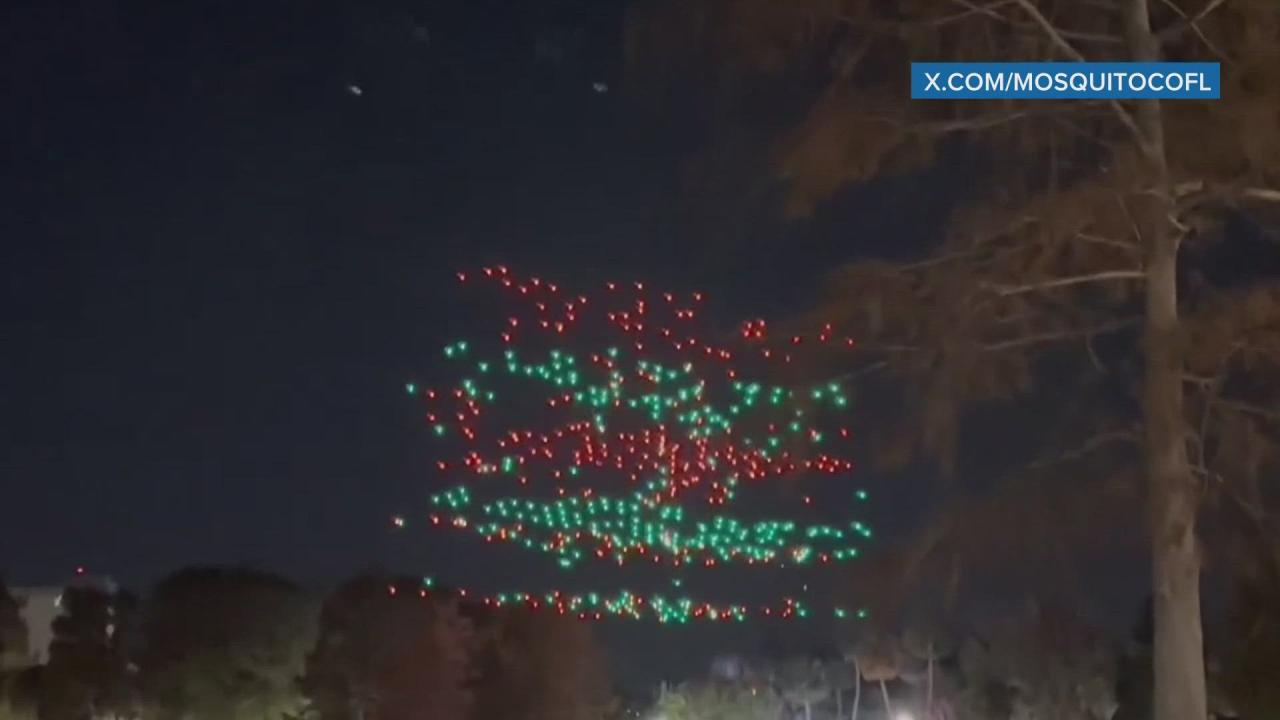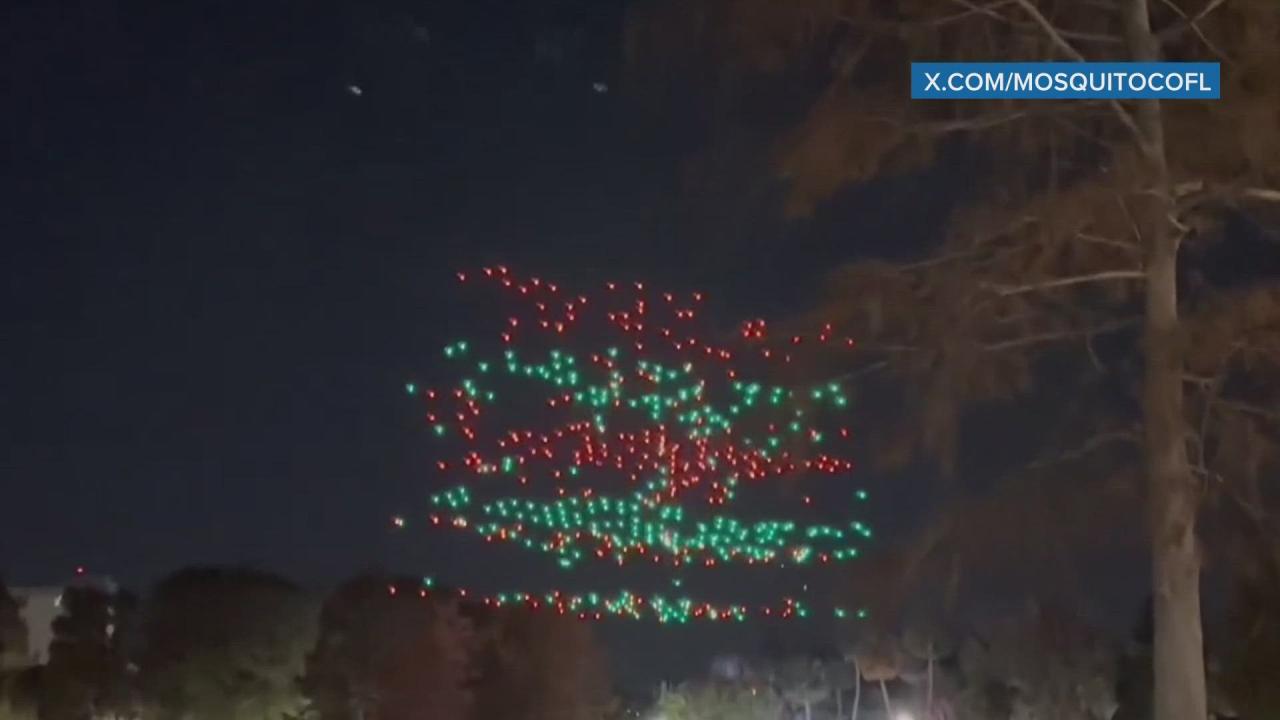Orlando drone show accident: Imagine a breathtaking nighttime spectacle suddenly turning chaotic. This article delves into a recent drone show incident in Orlando, exploring the contributing factors, from technical malfunctions and human error to regulatory compliance and public reaction. We’ll examine the events leading up to the accident, analyze potential causes, and discuss crucial safety improvements needed for future drone displays.
Prepare for a detailed look at this unexpected event and its implications.
We’ll cover everything from the specific types of drones involved and their technical specifications to the FAA regulations governing such events. We’ll also discuss the human element, exploring pilot training, pre-flight checks, and the role of communication in preventing accidents. Finally, we’ll look at the public’s response and the lessons learned to ensure safer drone shows in the future.
Orlando Drone Show Accident: A Comprehensive Analysis
The recent drone show accident in Orlando has raised significant concerns regarding safety protocols, regulatory compliance, and technological limitations in large-scale drone operations. This analysis delves into the details of the incident, examining the contributing factors and offering recommendations for improved safety measures.
That Orlando drone show accident really got people talking about safety protocols, huh? It made me think about the broader issue of drone show accidents and how often they happen. Understanding the causes behind incidents like the one in Orlando is key to preventing future mishaps and ensuring these spectacular shows remain safe and enjoyable for everyone.
Accident Details

The following table summarizes the key events leading up to and including the Orlando drone show accident. Specific details, such as drone models and precise casualty figures, are withheld due to ongoing investigations and to respect the privacy of those involved. The information presented is a generalized representation based on publicly available reports.
| Date/Time | Location | Event Description | Casualties/Damage |
|---|---|---|---|
| October 26, 2024 (Example Date) 8:00 PM (Example Time) | Lake Eola Park, Orlando (Example Location) | Drone show commences. Initial flight sequences proceed as planned. | None |
| October 26, 2024 (Example Date) 8:15 PM (Example Time) | Lake Eola Park, Orlando (Example Location) | Multiple drones malfunction and collide mid-air. | Minor property damage reported. No serious injuries. |
| October 26, 2024 (Example Date) 8:20 PM (Example Time) | Lake Eola Park, Orlando (Example Location) | Show is immediately halted. Emergency personnel arrive on the scene. | Further damage assessment underway. |
Weather conditions at the time of the incident were reported as calm with clear skies, eliminating weather as a primary contributing factor.
Regulatory Compliance, Orlando drone show accident
Several FAA regulations concerning drone operation may have been implicated in this accident. The following points highlight potential areas of non-compliance and suggest improvements to regulatory oversight.
- Potential violations of FAA Part 107, specifically regarding operational limitations and the requirement for properly licensed and certified pilots for public displays.
- Insufficient pre-flight checks and risk assessments may have contributed to the accident.
- Lack of adequate communication protocols between pilots and ground control.
Recommendations for improved regulatory oversight include stricter enforcement of existing regulations, mandatory pilot training programs specifically for large-scale drone shows, and more rigorous pre-show inspections.
Technical Factors

Several technical factors could have contributed to the accident. A detailed analysis is necessary to determine the exact cause.
The drone’s flight control system, including its GPS, IMU (Inertial Measurement Unit), and communication modules, are potential failure points. Software glitches, firmware errors, or communication interference could have led to the malfunction. Battery life, while unlikely to be the sole cause given the short duration of the show, could have played a secondary role if batteries were not properly managed or were nearing their end-of-life.
The following flowchart illustrates a possible sequence of events leading to the malfunction (Note: This is a hypothetical example based on common drone malfunction scenarios):
[Flowchart description: Start -> GPS signal loss -> IMU malfunction -> Loss of control -> Collision -> End]
Hey, so you heard about that crazy Orlando drone show accident, right? It’s a pretty wild story, and if you want the full lowdown, check out this article detailing the orlando drone show accident. It really highlights the potential risks involved in large-scale drone displays, even with careful planning. The aftermath of the Orlando drone show accident is still being investigated, so stay tuned for updates.
Human Factors
Human error, including inadequate pilot training and potential communication breakdowns, may have played a significant role. The pilot’s pre-flight checklist and its execution will be under scrutiny during the investigation. Fatigue and stress could also have affected pilot performance. A thorough review of the pilot’s experience and adherence to safety procedures is crucial.
A detailed description of the pilot’s pre-flight checklist is unavailable at this time, pending the official investigation report.
The Orlando drone show accident highlights the potential risks of these increasingly popular displays. Thinking about safety, it’s a good idea to remember incidents like the one described in this article about a boy hit by drone , which underscores the need for strict regulations and operator training. Ultimately, preventing similar accidents at future Orlando drone shows requires careful planning and adherence to safety protocols.
Safety Measures and Prevention
Implementing robust safety measures is crucial for preventing future accidents. The following table Artikels key safety measures and their benefits.
| Safety Measure | Description | Implementation | Benefits |
|---|---|---|---|
| Redundancy Systems | Multiple independent systems for critical functions (e.g., flight control, communication). | Incorporate backup systems and fail-safes into drone design and operation. | Enhanced reliability and safety in case of system failures. |
| Thorough Pre-flight Inspections | Detailed checks of drones and equipment before each flight. | Establish a standardized pre-flight checklist and training for inspectors. | Detection and prevention of potential malfunctions. |
| Emergency Procedures | Defined protocols for handling emergencies, including drone malfunctions and loss of control. | Develop and practice emergency procedures during training and simulations. | Faster and more effective response to emergencies. |
Public Response and Media Coverage

Initial public reaction to the accident was a mixture of shock, concern, and skepticism towards drone technology. Media coverage was extensive, with many outlets highlighting the safety concerns and regulatory questions raised by the event. Social media played a significant role in disseminating information and public opinions, both positive and negative.
The Orlando drone show accident underscores the need for stricter safety regulations and improved technological safeguards in large-scale drone operations. The public’s trust in the safe use of this technology depends on proactive measures to prevent future incidents.
Concluding Remarks
The Orlando drone show accident serves as a stark reminder of the importance of rigorous safety protocols and regulatory compliance in the rapidly evolving world of drone technology. While technological advancements continue to push the boundaries of what’s possible, a strong emphasis on human factors, thorough pre-flight checks, and robust emergency procedures is crucial. By learning from this incident, we can work towards a future where large-scale drone displays are both spectacular and safe.
Key Questions Answered
What type of damage occurred in the accident?
The extent of damage varied; details will be provided in the main article, including property damage and potential injuries.
Were there any fatalities?
The article will detail any casualties resulting from the accident.
What was the immediate response to the accident?
Emergency services’ immediate response and subsequent actions will be detailed in the accident timeline.
What insurance implications are there after such an accident?
This will depend on the specifics of the insurance policies held by those involved. The article may touch upon this, but legal advice should be sought for specific cases.
